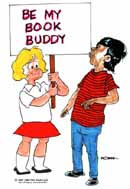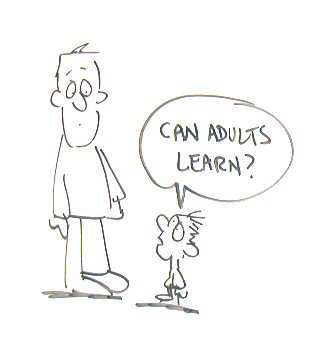
Sunday, November 28, 2010
Blog Entry #5 - Part Deux - My Personal Reflection of my Journey as an ESL Professional

Sunday, November 21, 2010
Entry #5 - Literature Circles

Tuesday, October 26, 2010
Entry #4 - Reflective Fieldnote Blog
 For this blog I will reflect on the observations that I completed about a selected student in my class.
For this blog I will reflect on the observations that I completed about a selected student in my class.
What are your overall impressions of this observation?
The reason why I chose this student to observe and speak with was to get to know her better. She came to school later in the year, and has fit in very well, she does not have any discipline problems and has good grades, so she tends to be overlooked by her teachers. It was very interesting to learn about her. I was so pleased to get to know her.
Overall this observation was very good and important to get to know a student who may be overlooked. I also found that taking the time to really talk with and watch one particular student really gives the teacher some insight on what the student really needs from us as educators. If I had the time I would do observations and interviews of all of my students in the beginning to get to know them all better.
What did you learn as a result of the fieldwork?
As a result of this fieldwork I learned a lot. I learned so much about this student's life (without getting too personal here) and her struggles. When meeting this young lady, one would never assume how tumultuous her life has been. She has been in 5 schools in 2 countries in her 8 years as a student. I also learned what a positive influence she has on her peers, she is a very straight-laced young person, and encourages her friends to attend classes when they want to skip, and she also takes the initiative to help friends who are experimenting with drugs and alcohol. I was very lucky to share some time with her.
I also learned how valuable interviews and observations can be for educators. I learned how students really do want to talk about themselves and express how they feel to their teachers. Our students deserve to have us help them and listen to them. As an educator I will continue interviews and observations after this fieldwork has been completed.
What is the value in case study research and analysis in terms of classroom practice?
Classroom practice can be greatly improved when teachers take the time to really get to know their students. As a teacher it is very important to take the time to reflect on practice - what observations does is forces the teacher to look at what the students are really doing and talking to them about their lives. Doing this type of research and analysis gives the teacher the ability and time to reflect on how students are reacting to their instruction and really understand what the student's lives are like. It is hard to remember what it is like to be 13 years old, and doing this will really give students a voice in the classroom.
What is the value of the ethnographic narrative?
I really feel that the greatest value in ethnographic narrative is reflection. Their is usually so little time for educators to reflect on their teaching and their students, this causes one to slow down, step back and think. There are a lot of books that talk about reflective practice and tell teachers to reflect, but the ethnographic narrative actually MAKES a teacher reflect. This places the teacher in a place where they can take the time with a student and their practice.
How will this information assist future teachers (next year’s teachers) as well as yourself in
meeting the needs of this particular second language learner?
I believe the future teachers of this student will be able to understand the stress that this young girl has. Reading the case study and narrative will cause the teacher to immediately want to get to know her better, and want to help her with her life.
This information will also help the teacher understand the practices and instruction that really benefit her, and how she can benefit the class. This young woman has a lot to give, but I didn't even really realize it until I took the time to get to know her and talked to her. It would be really nice to receive these types of case studies and narratives about all students before they enter our classrooms.
MTSU Honor Statement: This assignment/assessment was solely written by me. In no way have I, Jennifer Lassen, plagiarized (represented the work of another as my own) or otherwise violated the copyright laws and academic conventions of fair use. I know that violations of this policy may result in my being dismissed from Middle Tennessee State University and/or appropriate legal action being taken against me.
Jennifer Lassen
10-26-10
Tuesday, October 12, 2010
Reflective Fieldnote Blog Entry #3 - Action Research
 Section #1 / Thoughts about action research—in general—as a tool to improve practice.
Section #1 / Thoughts about action research—in general—as a tool to improve practice.
I really like action research and now that I have 3 projects under my belt I feel as if it is something that I can actually do in my classroom on a regular basis to actually improve practice.
We recently received our observation requirements for tenure and looking at something called the Educator Information Record it is not daunting because I can conduct action research easily to provide for this record required for my observations.
I also really liked completing the action research project that we were required to do for this class because I can actually see myself doing this in the future with other issues that I am struggling with. I know in the future I will struggle with a classroom practice or objective or how I am covering something and I can see myself using action research to decide where I need to change or improve my instructional practices.
Section #2 / Ideas generated as a result of your project.
I researched whether or not cooperative group work actually improved student grades and retention. It did, so now I have set a goal for myself to make sure I use some sort of cooperative grouping with every topic I cover. I tend to value independent work because I want students to be working independently and completing tasks in a timely manner. But, after doing this research I really want my students to work in more groups because it does help with retention and it really helps build comminity in the classroom, as well as help students with their ability to communicate and form work relationships.
Section #3 / Suggestions to other ESL professionals based on your findings.
I would like to suggest to other ESL professionals that they should try and find another teacher in their building who would be willing to work with them and their students in a larger cooperative grouping community. The students did really enjoy working with students and a teacher that they did not normally get to work with. And it really helps cement the idea of a learning community in the school.
I would also suggest to other ESL professionals that they should make sure to use cooperative groups with their students to aide in retention. Students work well in groups when they understand their expectations and have the freedom to explore the relationships they may have with group members. If anything cooperative groups are good for students because they are forced to use the target language, thus they are learning.
MTSU Honor Statement:This assignment/assessment was solely written by me. In no way have I plagiarized (represented the work of another as my own) or otherwise violatedthe copyright laws and academic conventions of fair use. I know that violationsof this policy may result in my being dismissed from Middle Tennessee StateUniversity and/or appropriate legal action being taken against me.Signed (submitting this statement to Teaching Faculty with student's name typedbelow constitutes signing):
Jennifer Lassen - 10-12-2010
Wednesday, September 22, 2010
Blog Entry #2 - Observation and Problem Identification
Teaching Issues
What identified problems related to teaching, lesson delivery, materials, and related strategies are present?
There are many problems that could be identified but two really stuck out in my mind were - student interactions and meaningfulness of cross-grade level cooperative group lessons, and how to make students better brainstormers and writers, as the TCAP writing assessment is facing my students this Spring. I want to specifically see if the strategies I am using are working, or if they need to be re-worked.
What problems or issues relating to teaching - in general - did you observe?
I really noticed during my observations that students had a hard time getting on task. They were either overly obsessed with completing word searches that are given to them as a settling down activity, argued over small points on the project, or really could not get started. Students had a very hard time finding a place to start on their work as a group.
What concerns emerged with regard to grouping, interactions, etc.?
Students seemed to be grouped well and were generally interacting with each other in mostly on-task manners. The major concerns for me were how to possibly make groups a little smaller. What is a good group size? And what to do with students who have such a difficult time working with a group that they cannot function in any group that they are given? Where do these students go? What is an appropriate place to put them? Should they work alone? I'm still struggling with that issue.
Second Language Acquisition
What did you observe that worked well in promoting second language acquisition?
Students, once they were able to get on task, were communicating only in the target language and were really working on task. The largest thing that worked well was the activity in it's entirety. The students listened to the teacher present the activity they would do as an interactive read-aloud and were given their task. The students did actually begin the task and were able to complete the entire task in their target language.
What types of interactions took place that encouraged second language acquisition?
The students were asked to create a story diagram of a book they had previously read in a cross-grade level group as a poster. The students were all able to get their story maps on the beginnings of the maps on the poster paper while using the target language. The largest component is that the students were able to do this because they were intentionally grouped with students who do not share a mutual language as much as possible.
What materials were best suited for the specific second language learners in this setting?
The materials were particularly well suited for the students because they used modernized graphic novels of fairy tales. These materials were so well receive by the students because they are illustrated in very modern and intriguing ways, and are not text heavy, which allows the students to create and question their understand of the story through looking at the text and group discussion which must be done because they have to agree on how they mapped their stories.
Ethnographic Perspective
What information do you need (as an ESL professional) to better meet the needs of the second language learners in this environment?
The information that would be most useful would be to better understand the backgrounds of the students. It is very important to know how the students will interact in a group. Teachers must have a background on the students to know what they are best suited for and the interactions that may be anticipated from them. When students are newly arrived in the USA it is very important that teachers make sure to group students with other students that they will not be sensitive to.
How was culture integrated into teaching and learning?
For this lesson the teachers had observed in the past that the students did not have required background knowledge required to enter into American culture in the area of fairy and folk tales, as this knowledge is sometimes used in general American vernacular, and is possible tested on standardized testing. The fairy tales were tales that most American students would know, but that foreign students were unaware of. The idea of integrating American culture in the lesson was deliberate. The teachers want students to know and be familiar with common fairy tales.
What issues or concerns related to culture, multiple perspectives and linguistic diversity emerged?
The largest issue was showing students how the knowledge of these tales would impact their learning and further integration into the general population. This issue will have to be addressed between the teacher and mentee to see how it can be further addressed. I believe a look at the language used and the ideals posed by the fairy tales will be the next lesson, once students have finished their posters and show they have a good understanding of the story.
MTSU Honor Statement:
This assessment/assignment was written solely by me. In no way have I plagiarized (represented the work of another as my own) or otherwise violated the copyright laws and academic conventions of fair use. I know that violations of this policy may result in my being dismissed from Middle Tennessee State University and/or appropriate legal action being taken against me.
9-22-10
Jennifer Lassen
Monday, September 13, 2010
Blog Entry #1 - Classroom Observation
Saturday, August 28, 2010
Who is Jen?
I hope you will enjoy reading my blog. It will cover my fieldnotes as I observe and interact with English Language Learning students at my school.
"See" you soon - JEN
